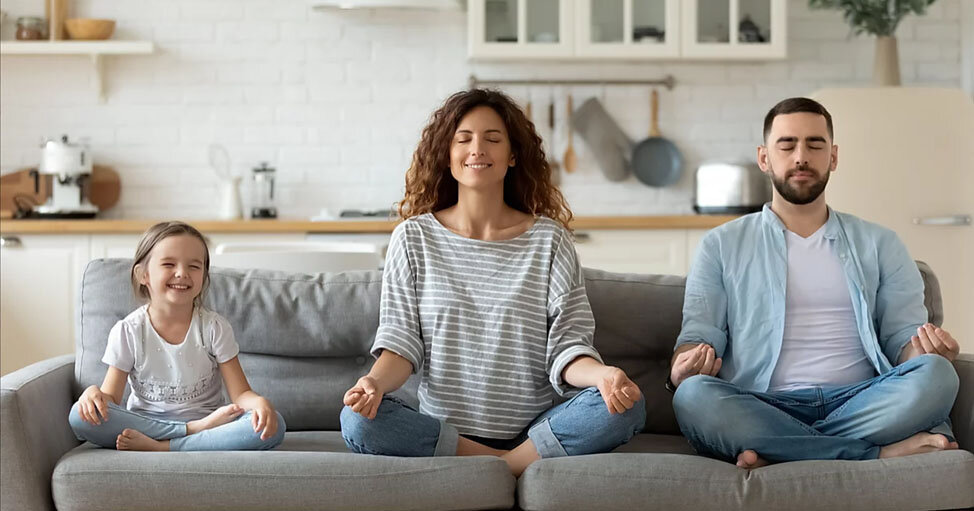#1 Tool for Pandemic Parenting
/Today we’re excited to bring you some timely and practical parenting advice from a beloved figure in the Austin educational community, Sensei Jonathan Hewitt. As founder of Life Ki-do Martial Arts, Parenting & Life Education, Sensei Jonathan has worked with countless children, teens, and adults to cultivate inner peace, confidence, and happiness. In this guest post, he explains an exceptionally effective technique for navigating these difficult times as parents, educators, and caregivers.
“Pandemic Parenting” is not a term any of us ever expected to hear, let alone experience! Yet here we are.
If you’re feeling overwhelmed by the relentless daily details of managing kids AND school AND work AND home while ALSO feeling the greater stress that comes along with all the unknowns of a world pandemic, you’re not alone. It’s a lot for all of us.
The thing is that there’s no way to fix or manage everything in our lives in a way that ever feels 100 percent resolved, especially now during a pandemic.
So, the #1 tool not only to help yourself but also to help everyone around you is to manage yourself first. How often have we heard “Put your oxygen mask on before helping anyone else”? If we think about it, our natural parenting instinct would always be to help our kids before ourselves. Wouldn’t we be terrible parents if we thought about ourselves first? How could we even think about giving ourselves oxygen before our kids, who are so small and so vulnerable and unable to take care of themselves? It seems so counterintuitive to fight this natural protective instinct.
However, in these moments of intense survival, data shows that parents do need to give themselves oxygen first to stabilize themselves BEFORE they can be helpful to their kids.
The biggest objection I hear from parents is “When”?! When can I find time to take care of myself? Especially in our current world, when kids are home and you are juggling a million details and schedules and emotions 24/7. It’s hard.
So, my #1 Pandemic Parenting tip is called Continuous Breathing. The reason it’s my #1 tip right now is that you practice it WHILE doing your everyday activities.
The goal of Continuous Breathing is to regulate our own nervous system. While we can’t completely control our outer world, whether that’s in our own home or in this greater world pandemic, we actually do have a way to directly impact our own nervous system, which in turn can have a big influence on our surroundings.
I first learned about this from my world-renowned martial arts teacher, Vladimir Vasiliev. I figured that if he uses it successfully during full-on combat, it can also work for the triage we are doing in our own homes these days.
As you’ve probably experienced, when we are under stress, our breathing tends to be shallow and stuck. This puts our body and mind in survival, fight, flight, or freeze mode. Our bodies are hardwired to respond this way for moments of physical survival and emergency. But to be in this mode on a regular basis throughout the day creates havoc and chaos on our nervous system, which in turn feeds the havoc and chaos around us.
Continuous Breathing allows us to counterbalance the survival stressed-out mode by sending a powerful message to our nervous system to be calm, strong, and fluid. At Life Ki-do, we call this “being like a River.”
If you allow it, Continuous Breathing can become your own private coach and best friend reminding you to slow down, be present, and flow with your inner world and the world around you.
The good news is that our bodies automatically breathe for us to keep us alive. But we are not harnessing the great power the breath can really give us. We can be more than just alive. We can use the breath to really nurture our physical, mental, and emotional well-being.
First, we need to become aware and conscious of our breath. It takes a shift of our awareness to really tune in and listen to the inhale and exhale that’s already happening. Can you feel the air going in your nose and out your nose or mouth? Can you hear the breath inside your head and feel it in your body?
Now that you are aware of your breath, the second step is to gently adjust it to nurture the River flow state in that moment. If you are feeling stress or tension, can you slow down your inhale and exhale to calm your nervous system? If you are feeling sluggish, can you speed it up to wake up and energize your system? If the rhythm of your breath feels right, then focus on that rhythmic inhale and exhale, and it will deepen the calm of your nervous system.
The best way to make Continuous Breathing part of your life is to attach it to a habit already in your routine. Taking a shower is a great example. While showering, try to focus on your Continuous Breathing. Notice your breath and gently adjust it by slowing it down, taking it deeper, or speeding it up to find your perfect rhythm for that moment. Feel your breath. Hear your breath.
The next step is to focus on Continuous Breathing during other daily activities. Maybe it’s emptying the dishwasher, taking the dog for a walk, folding laundry. Once you’ve developed a practice during everyday routines, it should be easier for you to access it during moments of greater stress and fatigue.
The best part is that the breath is ALWAYS there for you. It’s something you can really rely on. It can be a best friend who never lets you down. It can be an anchor that helps you to find flow and calm even in the storm.
For a video on Continuous Breathing and for free Pandemic Parenting Workshops, please visit https://www.lifekido.com/pandemic-parenting.
Sensei Jonathan Hewitt | Life Ki-do Martial Arts, Parenting & Life Education




















